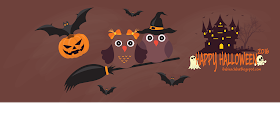Halloween History
Straddling the line between fall and winter, plenty and paucity, life and death, Halloween is a time of celebration and superstition. It is thought to have originated with the ancient Celtic festival of Samhain, when people would light bonfires and wear costumes to ward off roaming ghosts. In the eighth century, Pope Gregory III designated November 1 as a time to honor all saints and martyrs; the holiday, All Saints’ Day, incorporated some of the traditions of Samhain. The evening before was known as All Hallows’ Eve and later Halloween. Over time, Halloween evolved into a secular, community-based event characterized by child-friendly activities such as trick-or-treating. In a number of countries around the world, as the days grow shorter and the nights get colder, people continue to usher in the winter season with gatherings, costumes and sweet treats.
Origin of Halloween
Halloween’s origins date back to the ancient Celtic festival of Samhain (pronounced sow-in). The Celts, who lived 2,000 years ago in the area that is now Ireland, the United Kingdom and northern France, celebrated their new year on November 1. This day marked the end of summer and the harvest and the beginning of the dark, cold winter, a time of year that was often associated with human death. Celts believed that on the night before the new year, the boundary between the worlds of the living and the dead became blurred. On the night of October 31 they celebrated Samhain, when it was believed that the ghosts of the dead returned to earth. In addition to causing trouble and damaging crops, Celts thought that the presence of the otherworldly spirits made it easier for the Druids, or Celtic priests, to make predictions about the future. For a people entirely dependent on the volatile natural world, these prophecies were an important source of comfort and direction during the long, dark winter.
万圣节历史
跨界秋季和冬季,大量的缺乏和生与死之间的界限,万圣节是庆祝和迷信的时间。它被认为起源与Samhain的,古老的凯尔特节日时,人们会点燃篝火,并穿上戏服,以抵御漫游鬼。在第八世纪,教皇格里高利三世指定11月1日作为一个时间来纪念所有的圣人和烈士;万圣节日加入了一些萨温节的传统。傍晚前被称为万圣节前夕,到了晚上就是万圣节的开头。随着时间的流逝,万圣节演变为特征的儿童友好活动,如欺骗或治疗世俗的,基于社区的活动。在世界上许多国家,随着日子变短了,黑夜变寒冷,人们不断在冬季有聚会,服饰和甜点迎来。
万圣节起
万圣节的起源可以追溯到萨温节的古代凯尔特音乐节(发音母猪的)。凯尔特人,谁在2000年前生活在现在是爱尔兰,英国和法国北部地区,庆祝他们新的一年的11月1日这一天标志着夏天的结束和收获和黑暗,寒冷的冬天的开始,这是经常与人死亡有关一年中的时间。凯尔特人相信在夜在新的一年之前,生活的世界和死者之间的界限变得模糊。 10月31日晚上,他们庆祝Samhain的,当它被认为死者的鬼魂返回地球。除了造成麻烦和破坏庄稼,凯尔特人认为鬼神灵的存在使得它更容易为德鲁伊或者凯尔特人的祭司,要对未来做出预测。对于一个人来说完全依赖于挥发自然世界,这些预言都是舒适和方向的漫长而黑暗的冬季期间的一个重要来源。
information come from
http://www.history.com/topics/halloween/history-of-halloween
http://www.history.com/topics/halloween/history-of-halloween
Bellow is showing some Halloween activity
Download Halloween Pumkin Coloring
Pumpkin Life Cycle
Some of the activity learn on life cycle and new word.
Download Pumkin Life Cycle
Download Halloween Bingo1,Halloween Bingo2
Download I Spy Counting
Will do updating.....








No comments:
Post a Comment